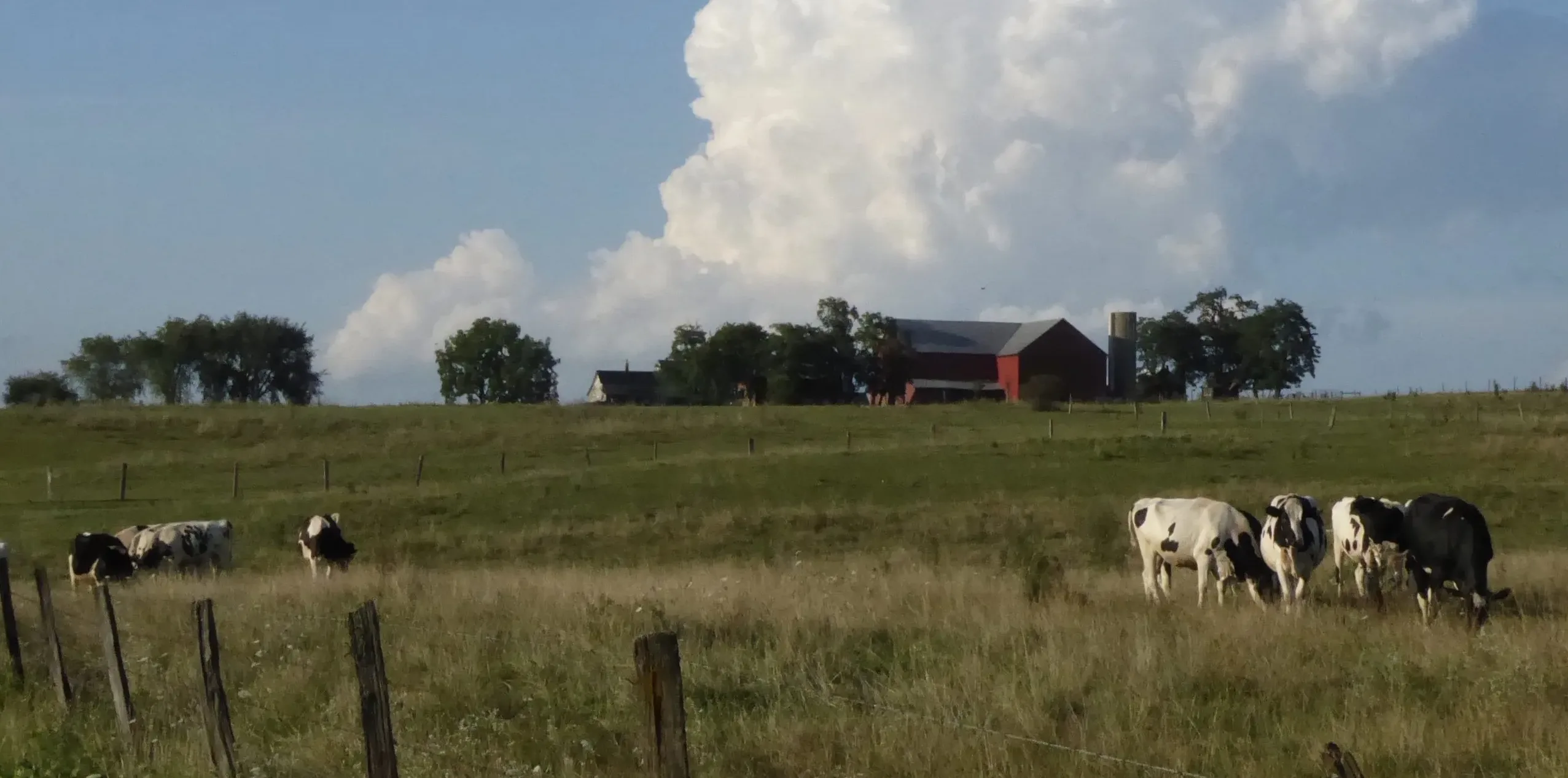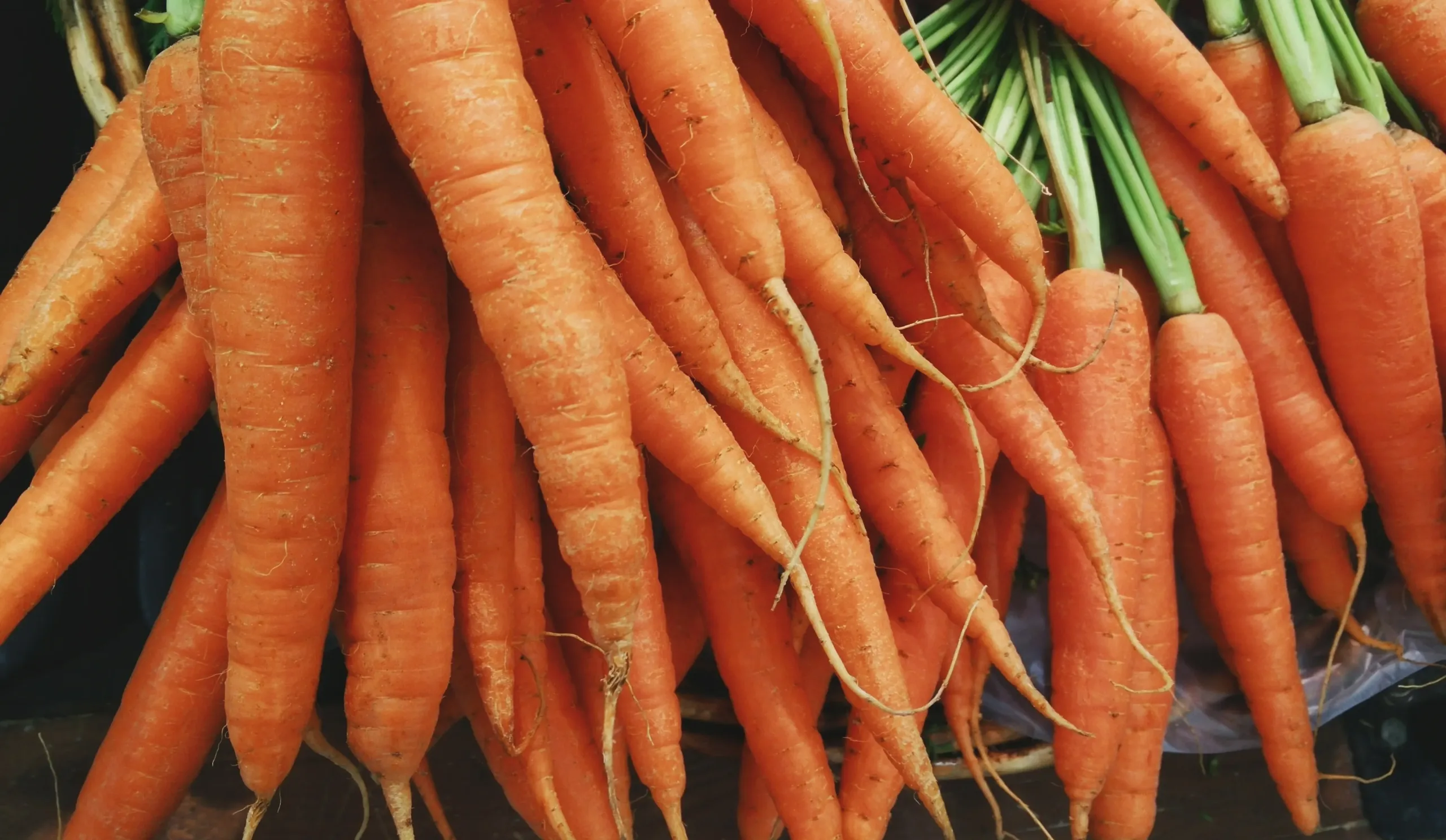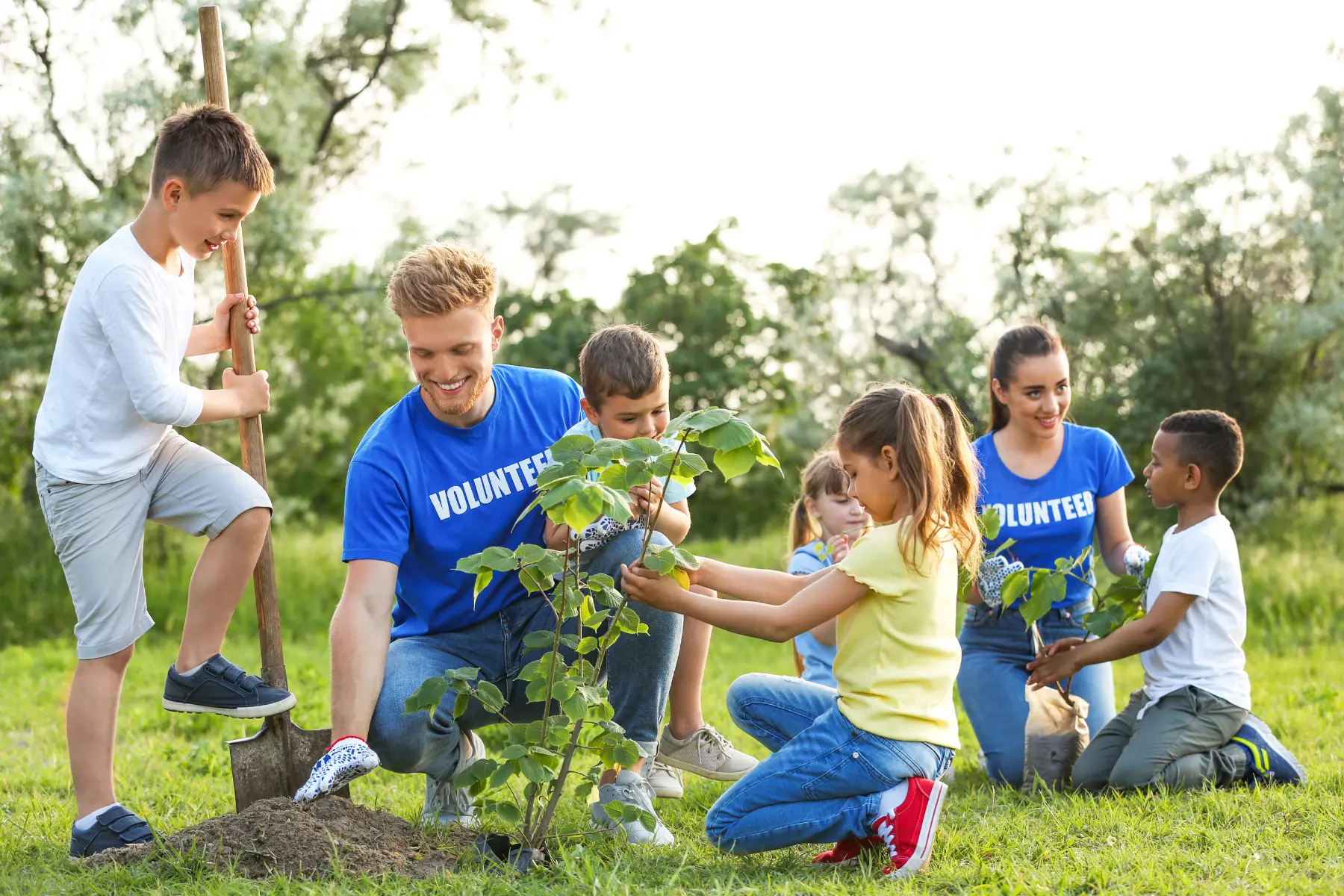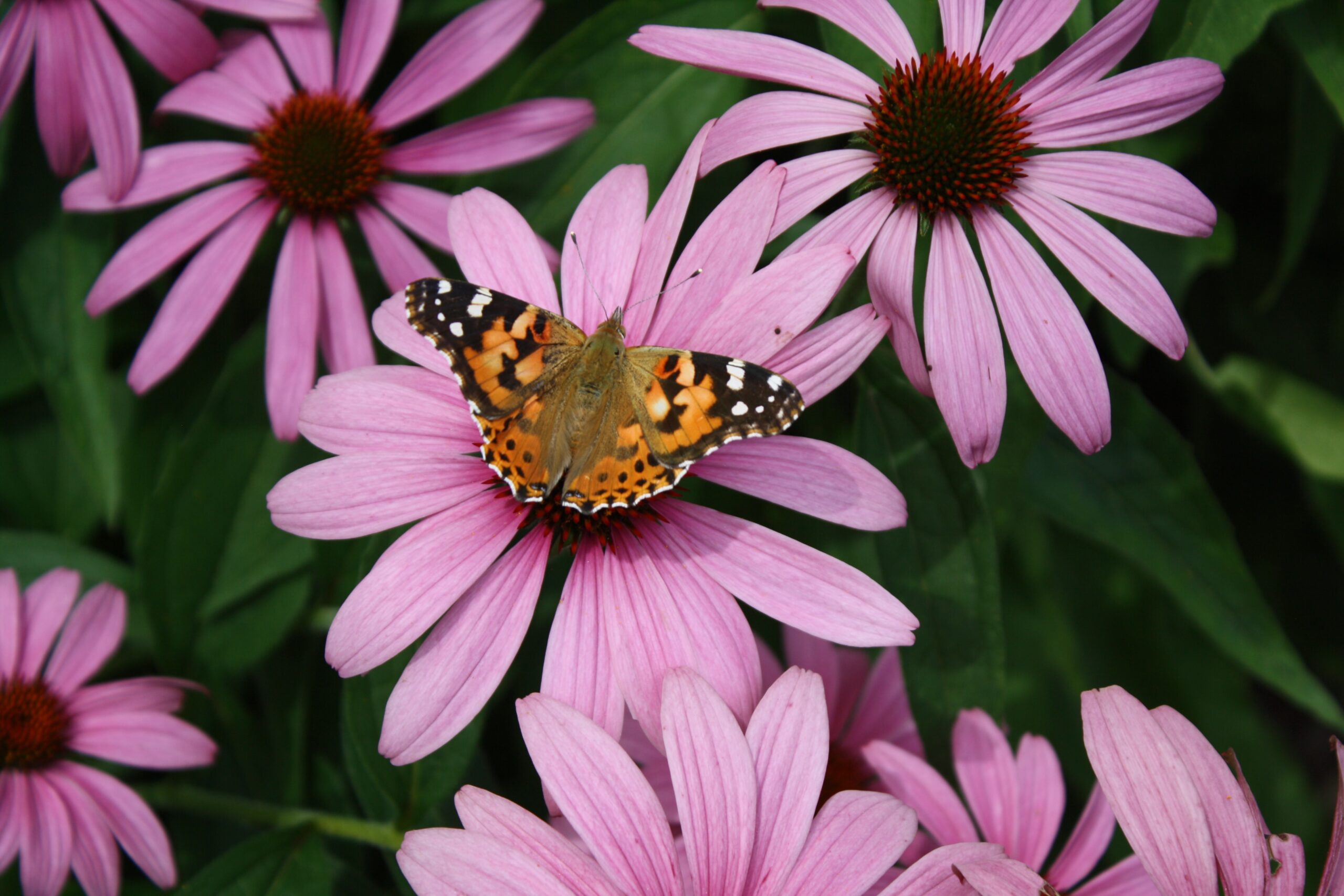
By Elizabeth Schuster, Environmental Economist
Last year, we were surprised to get a citation for the pollinator strip in our backyard – a small no-mow zone we were testing out. This accidental experiment has taught me a lot about native landscaping. I’ll share with you 1) where we went wrong, 2) what we learned, and 3) actions to help more landowners use native landscaping.
Why we considered native landscaping for our backyard
And as the famous Maya Angelou quote goes, “Do the best you can until you know better. Then when you know better, do better.” This was true for us and native landscaping – despite having never considered it before, I finally reached a point where I learned enough that I had to start thinking differently.
Many benefits come from having native landscaping instead of turf grass in your yard. For us, here were the top 3 reasons we considered converting a portion of our yard to natives:
- Native landscaping can help absorb stormwater. Our non-native trees were dying because the backyard was too wet. Native plants would be more resilient to the wet conditions, while also absorbing stormwater.
- Natives don’t require lawn chemicals, which leads to better water quality. It’s hard to manage a “perfect” turfgrass yard with no chemicals. All runoff eventually flows downstream and when nutrients enter our streams, they can lead to algal blooms. This depletes our streams of oxygen and leads to a loss of species- especially fish and mussels.
-
- Just looking at mussels – often a canary in the coal mine for streams, because of their sensitivity to contaminants, “127 species of mussels once found in the Ohio River, 11 are extinct, and 46 others are classified as threatened, endangered, or a species of concern.” (USACE)
- Our agricultural production depends on pollinators. We live in Wayne County, OH which is the top local food producer in the state. Agriculture depends on pollinators and other beneficial insects, which are more likely to thrive in native habitat.
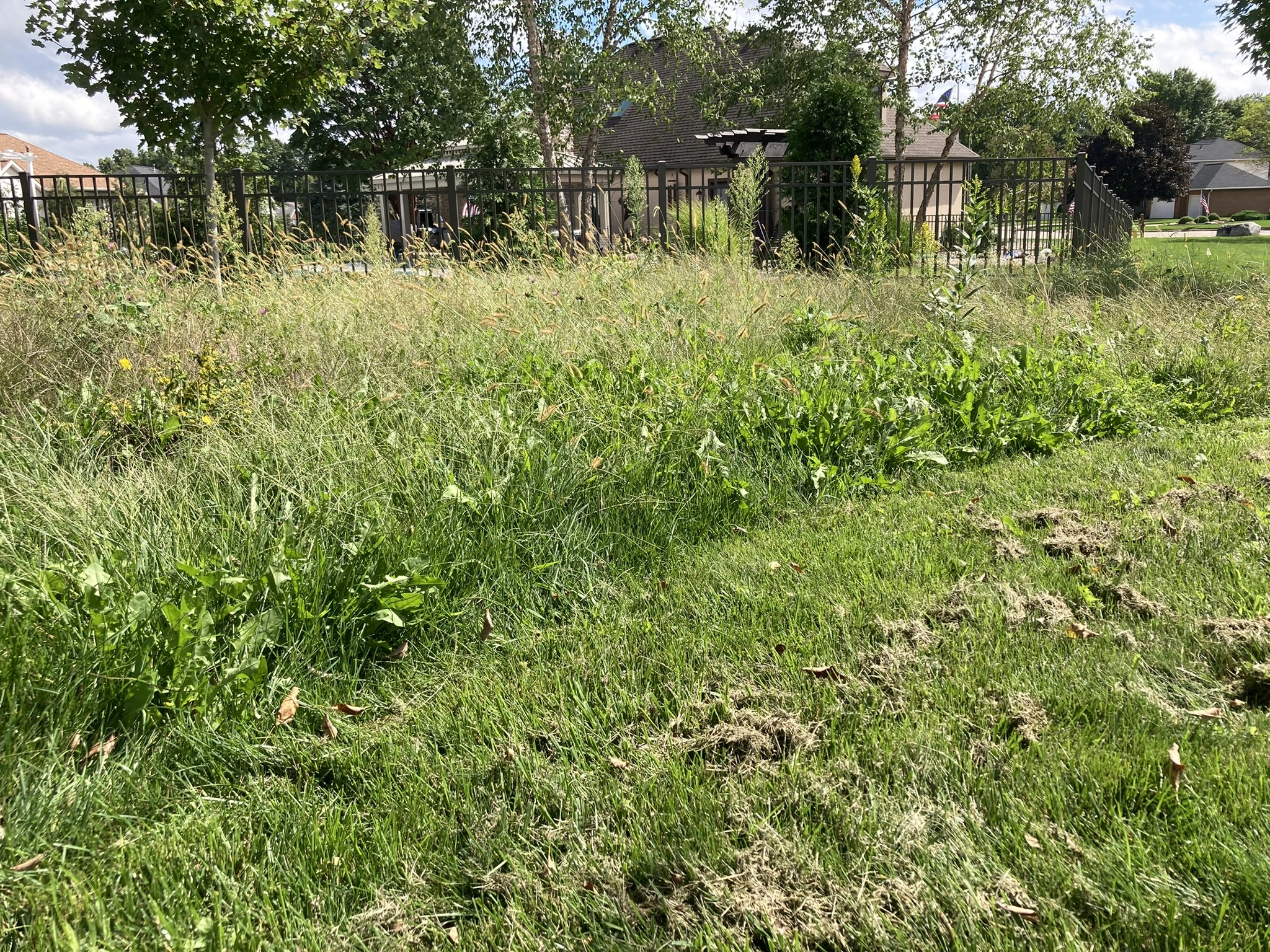
Photo 1. Our small no-mow zone in our backyard, Summer 2022.
Where we went wrong
We decided to start with a small no-mow zone experiment in our backyard. My husband and I agreed from the start, “This is a test. We’ll see what it looks like and then adapt as needed.” We stopped mowing the strip in the corner of our backyard in late spring of 2022 and let it grow all summer.
We had not anticipated the strong perception that no-mow zones are just “lazy landscaping.” While there are some benefits to insects and other pollinators by the habitat created by no-mow zones, a lot of folks are not aware of those benefits.
We went wrong by not putting up a sign or notifying our neighbors. The neighbors did not understand it was an intentional management strategy. When our no-mow zone went above 12 inches in height, one of our neighbors reported us for violating the City’s weed ordinance, which states:
All premises and exterior property shall be maintained free from weeds or plant growth in excess of twelve inches. All noxious weeds shall be prohibited. Weeds shall be defined as all grasses, annual plants and vegetation, other than trees or shrubs provided; however, this term shall not include cultivated flowers and gardens.
We did not have a good justification, because we had not “cultivated” the pollinator strip. So, we needed to mow the strip and start over with a new plan of action.
What we learned
As we began researching different types of pollinator strip, we found that the City’s weed ordinance was difficult to follow.
- What does it mean that we needed to have “cultivated flowers and gardens” for natives to be acceptable?
- What if we spent a lot of money and resources on native habitat and then had to remove it, because it didn’t meet the definition of cultivated?
Some of the challenges we faced, and what we learned:
- Do we plant native pollinator seeds or transplant seedlings from nurseries? We started with the idea that we’d plant seeds. We didn’t want to use chemicals to kill the existing grass, so we followed advice to put cardboard boxes over the grass to kill it. But despite leaving the boxes on the grass all winter, it didn’t kill the grass, which would make it too hard to plant the seeds.
- Where do we buy native plants? Most of the nurseries we found were a long drive. With a busy work schedule and not owning a pick-up truck to transport large volumes of plants, it didn’t seem efficient to drive 1.5 hours or more to get small batches of native plants. We looked locally but the main places that sell native plants only had them available for a few weeks in the spring. If you miss that window, you can’t get access to native plants.
- All of the natives are small and vulnerable. We ended up buying a couple dozen plants from two local greenhouses. They were started from seed this year and were so small that bunnies ate about a quarter of them immediately. We were only able to find 1 native shrub that was larger and more established – I presume it was more than a year old.
We now have a strip of native plants in our backyard, with mulch so it will appear to be a cultivated garden. And we learned – we have signs indicating “This garden has native Ohio plants to support our native pollinators. But I don’t think we can claim success quite yet. We’ll have to wait until next spring to see what returns and how much they grow.
Plus, there are other challenges that will impact the ability of others to plant natives in their yards. There are several opportunities for you to help, including these 3:
- If your City ordinance does not directly allow for native landscaping, consider getting your ordinance updated.
- Where I live, the City Weed Ordinance is still too vague. I’m working with a small group to propose definitions of words like “weeds” and “cultivate” to ensure that there is clarity, guidance, and consistently with the enforcement of the weed ordinance.
- If you are a landscaper or want to start a new business, there is a clear gap to fill in landscaping with natives.
- I would have preferred to hire a landscaper to plant our natives. But the landscapers I approached did not appear to understand what I wanted, where to find natives, or why it matters. There is a real gap here and a potential business opportunity if you know anyone who wants to start a landscaping company that specializes in natives.
- More greenhouses should be offering native plants.
- Most of the local greenhouses that I have visited don’t have native plants, or if they do, it’s a very small section that might not even be labeled as “native.” We need more options for natives at our local greenhouses, so that non-natives are not always the easy default moving forward.
In Ohio, the development of housing and rural villages – often called “rural sprawl” – is fragmenting our habitat. In other words, when we have buildings, paved areas, and lawns with no native plants, this makes it difficult for wildlife to move along connected corridors of natural land. It makes it harder for native pollinators, butterflies, and birds to have resting places to stop for food.
Backyard habitat DOES make a difference. Start small, one plant at a time, finding ways to convert your existing gardens to natives.
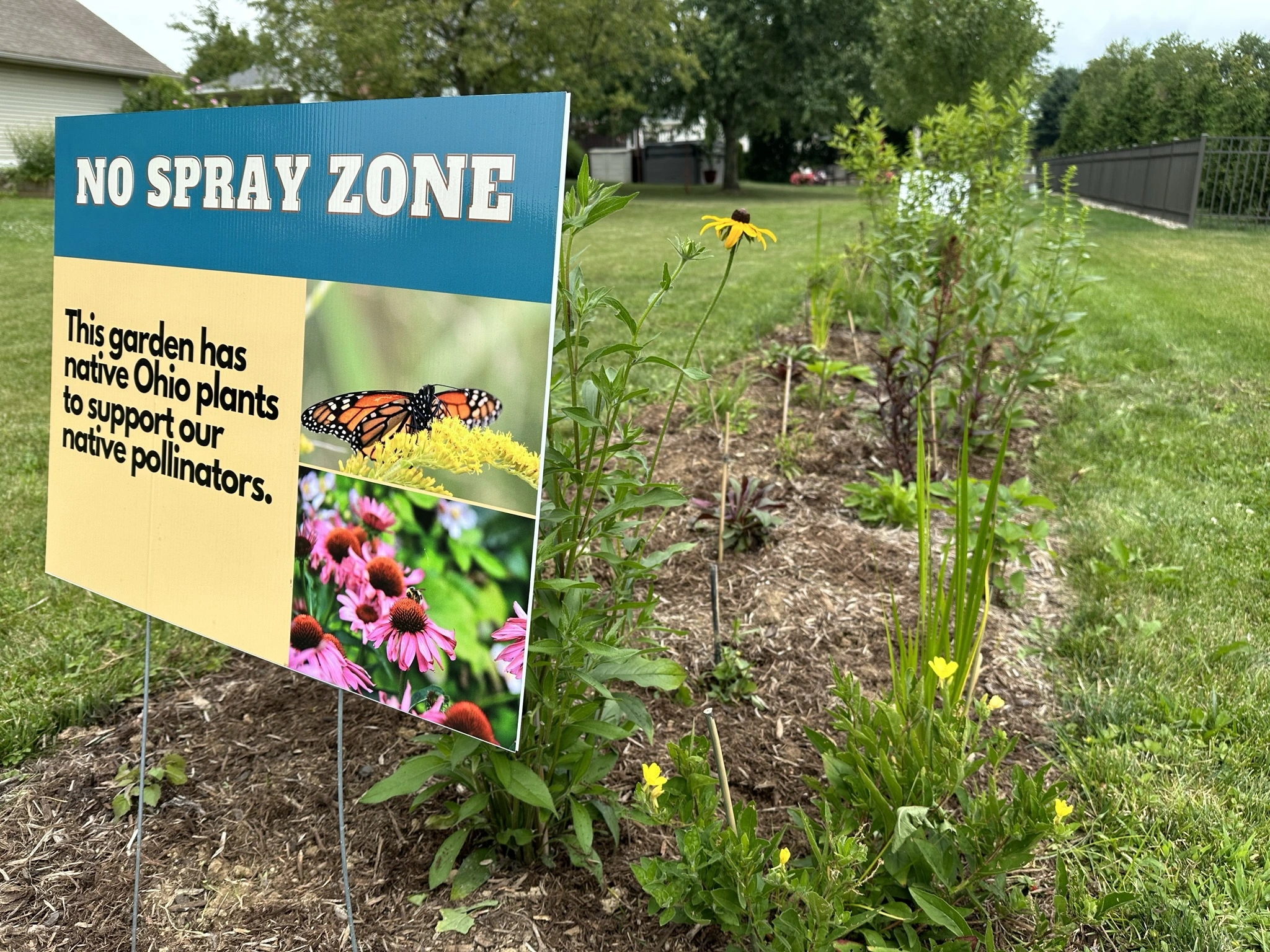
Photo 2: Newly planted natives, mulched, in effort to comply with the city weed ordinance.
Actions to help more landowners use native landscaping
We now have a strip of native plants in our backyard, with mulch so it will appear to be a cultivated garden. And we learned – we have signs indicating “This garden has native Ohio plants to support our native pollinators. But I don’t think we can claim success quite yet. We’ll have to wait until next spring to see what returns and how much they grow.
Plus, there are other challenges that will impact the ability of others to plant natives in their yards. There are several opportunities for you to help, including these 3:
- If your City ordinance does not directly allow for native landscaping, consider getting your ordinance updated.
- Where I live, the City Weed Ordinance is still too vague. I’m working with a small group to propose definitions of words like “weeds” and “cultivate” to ensure that there is clarity, guidance, and consistently with the enforcement of the weed ordinance.
- If you are a landscaper or want to start a new business, there is a clear gap to fill in landscaping with natives.
- I would have preferred to hire a landscaper to plant our natives. But the landscapers I approached did not appear to understand what I wanted, where to find natives, or why it matters. There is a real gap here and a potential business opportunity if you know anyone who wants to start a landscaping company that specializes in natives.
- More greenhouses should be offering native plants.
- Most of the local greenhouses that I have visited don’t have native plants, or if they do, it’s a very small section that might not even be labeled as “native.” We need more options for natives at our local greenhouses, so that non-natives are not always the easy default moving forward.
In Ohio, the development of housing and rural villages – often called “rural sprawl” – is fragmenting our habitat. In other words, when we have buildings, paved areas, and lawns with no native plants, this makes it difficult for wildlife to move along connected corridors of natural land. It makes it harder for native pollinators, butterflies, and birds to have resting places to stop for food.
Backyard habitat DOES make a difference. Start small, one plant at a time, finding ways to convert your existing gardens to natives.

